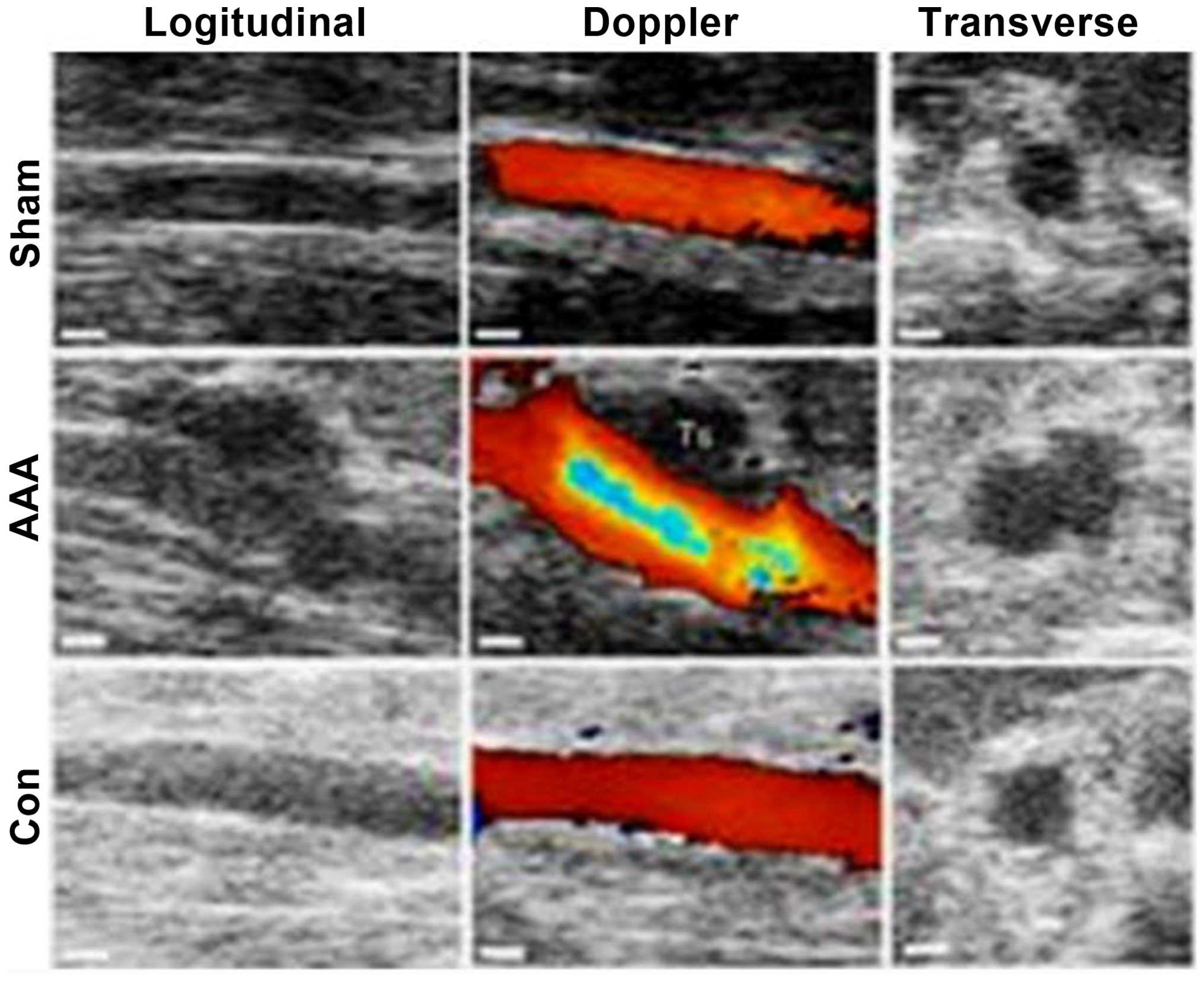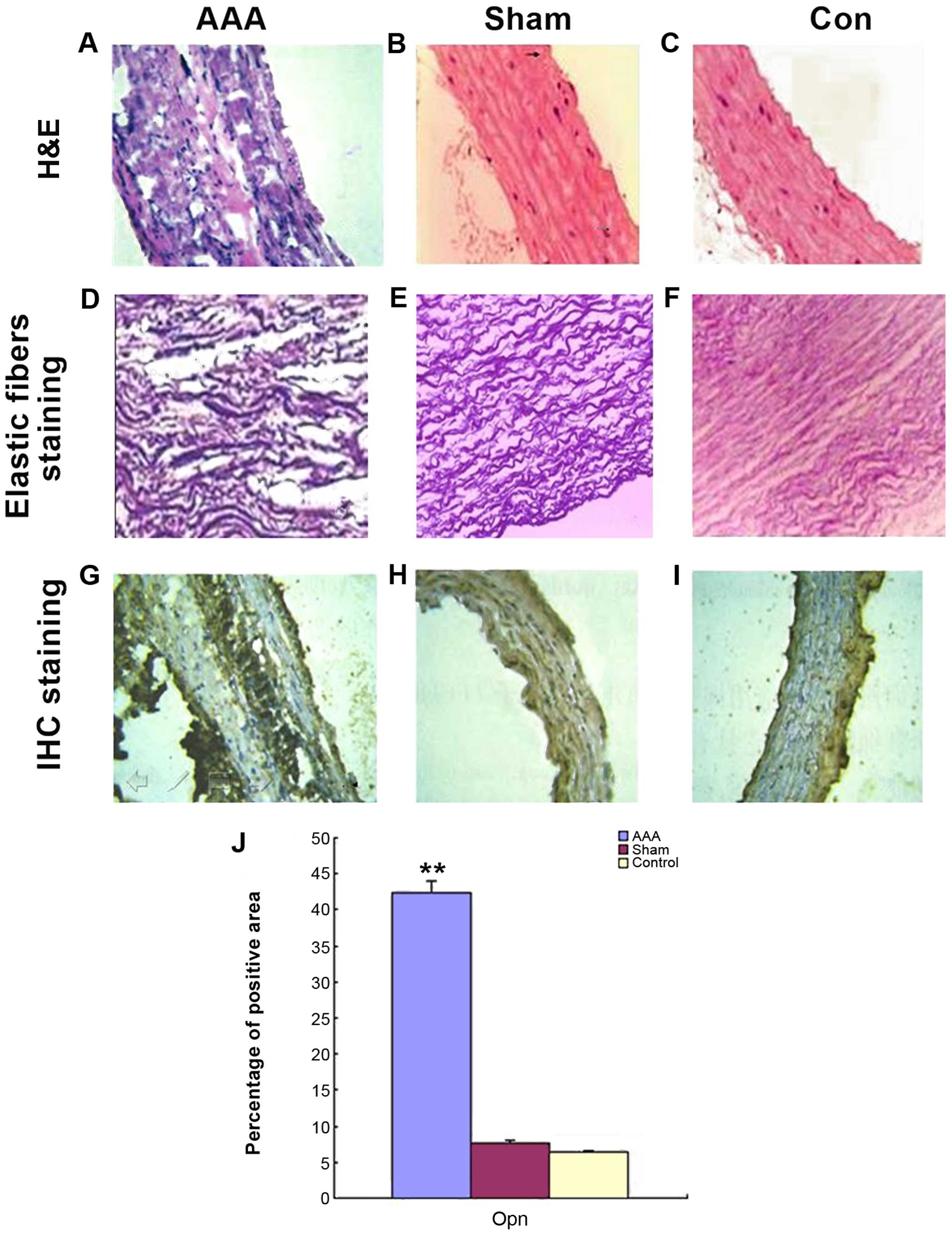Study of the functional mechanisms of osteopontin and chemokine-like factor 1 in the development and progression of abdominal aortic aneurysms in rats
- Authors:
- Published online on: November 10, 2016 https://doi.org/10.3892/etm.2016.3891
- Pages: 4007-4011
-
Copyright: © Li et al. This is an open access article distributed under the terms of Creative Commons Attribution License.
Metrics: Total
Views: 0 (Spandidos Publications: | PMC Statistics: )
Total PDF Downloads: 0 (Spandidos Publications: | PMC Statistics: )
Abstract
The aim of the study was to investigate the functional mechanisms of osteopontin (Opn) and chemokine‑like factor 1 (Cklf1) during the development and progression of abdominal aortic aneurysms (AAA) in rats. Healthy adult Sprague-Dawley rats (n=30) were randomly divided into the AAA, control and sham groups (10 rats/group) and experimental rat models of AAA were generated by enzyme perfusion in abdominal aorta for 30 min. The AAA formation was assessed by measuring the aortal diameter and hematoxylin and eosin staining as well as specific staining to detect the structural changes of the aorta and inflammatory cell infiltration. Immunohistochemistry, western blot analysis and statistical analysis were also performed to examine the expression levels of Opn, Cklf1 and matrix metalloproteinase (MMP)‑2 in the arterial tissue. Rat models of AAA were successfully established by protease perfusion. After perfusion, the diameter expansion rate of abdominal aorta was significantly higher (P<0.01) compared to controls, elastin present at the middle layer was significantly reduced and inflammatory cell infiltration was significantly higher in AAA rats. The expression of Opn, Cklf1 and MMP‑2 in the AAA group was significantly increased compared to the control group (P<0.05) as revealed by immunohistochemical staining. The western blot analysis revealed that, the expression levels of Opn, Cklf1 and MMP‑2 in the AAA group were significantly higher than the sham and control groups (P<0.01). We also found that the expression of Opn and MMP‑2 was positively correlated. In conclusion, in rat models of AAA, Opn and Cklf1 function synergistically to upregulate the expression of MMP‑2, causing accelerated degradation of extracellular matrix and eventually leading to the development and progression of AAA.











